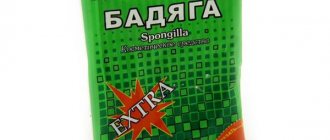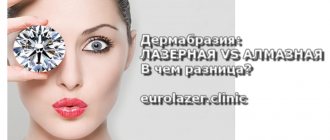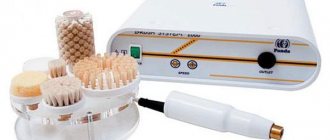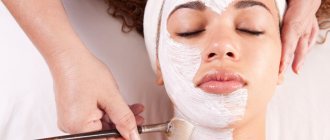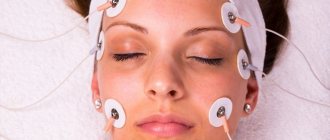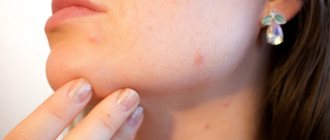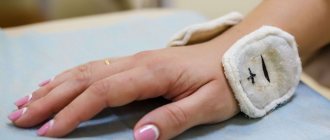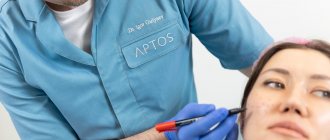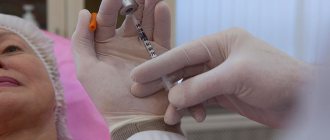In modern medicine, Botox is used in cosmetology to eliminate facial wrinkles. A clearly expressed effect from the procedure is observed on the 14th day after its implementation and lasts for approximately four to six months.
The injections cause persistent muscle relaxation, due to which wrinkles disappear or, in particularly difficult cases, become noticeably smaller. The skin on the face is smoothed, becomes visually more youthful and radiant.
Does Botox prevent the appearance of wrinkles?
When the first signs of wrinkles appear on the face, Botox can easily help smooth them out and advance the aging process. With these injections you can remove many signs of age on the face, as well as other areas. For example, you can temporarily remove or reduce horizontal or vertical lines on the forehead that form a frown, “crow’s feet”, raise drooping eyebrows, remove facial “puppet” wrinkles that lead from the wings of the nose to the edges of the mouth, raise the corners of the lips, remove vertical wrinkles on the neck and much more. Botox is also used with great success for armpits with excessive sweating.
Contraindications
Injections of Botox or its analogues into the lips and other areas of the face are contraindicated in the following pathological conditions:
- drug, alcohol addiction (may be enhanced by the neurotoxicity of the drug);
- neoplasms;
- blood diseases in which clotting is impaired, pronounced hemophilia;
- acute period of somatic diseases;
- decompensated diabetes mellitus;
- rapid muscle fatigue (myasthenic syndrome);
- infectious diseases;
- visual refractive error;
- mental disorders.
Before the procedure of Botox injections into the lips, the doctor objectively assesses the patient’s condition. Determines the presence of signs of febrile and intoxication syndromes (pallor of the skin, chills, temperature, vomiting). If adverse events are detected, the procedure is postponed to another convenient time after the patient has recovered. Beauty injections are not given to persons under 18 years of age, with an unstable emotional state or signs of mental disorder. Cosmetic procedures are not performed for pregnant and lactating women.
How does Botox injection work?
It is a mistake to believe that Botox fills in wrinkles, lips or other areas. Its goal is to relax the muscles to prevent the formation of new wrinkles and smooth out existing ones. After a Botox injection, the susceptibility of muscle fibers to nerve impulses is temporarily blocked, as a result of which the muscle relaxes and stops contracting. At the same time, this process is completely safe for both nerve and muscle fibers. After a few months, Botox stops its effect, and the muscles begin to work as before, and wrinkles manage to smooth out during this time.
Rehabilitation period
Botox is a drug that is safe for human health, however, as after any injection procedure, there is a rehabilitation period. It lasts only a few days, and the duration depends on compliance with the recommendations.
- For 3–4 hours after the injections, you should not take a horizontal position and lower your head.
- You can touch your face and wash your face 24 hours after the procedure. In this case, the touches should be light, without active rubbing.
- Mechanical scrubbing agents are prohibited for 5–7 days (until bruises and swelling completely disappear).
- For 2 weeks after Botox injections in the lip area, you should avoid thermal treatments, sports, and massage.
- Do not consume hot drinks or food (over 40 °C) for 7–10 days.
- In order to prevent inflammation, puncture sites should be treated with an antiseptic 2-3 times a day. Sprays that do not injure the skin are best suited for this purpose.
Is it possible to lose sensitivity and have a “frozen” face effect after Botox?
Botox will not affect the nerves or cause the person to feel numbness or any discomfort. If, for example, the injections were injected into the area between the eyebrows, where a vertical wrinkle often forms, then the person will not be able to frown for some time. However, in order not to look like the character Spock from Star Wars, you should trust your face only to the hands of a plastic surgeon or cosmetologist who knows the location of the muscles and who can estimate the amount of Botox needed by the patient. Many people worry that Botox will be noticeable to others. Yes and no. If the procedure was carried out incorrectly, then when a person laughs or cries, the corners of his eyes, for example, will not move. If everything was done well, then the presence of Botox will be noticeable to a small extent.
Medical uses of Botox
It seems that the idea of using botulinum poison acquired a more humane outline when it was picked up by doctors after the military.
The first was the American ophthalmologist Alan Scott, who in the 1960s conducted successful experiments using BTA on cross-eyed monkeys. After this, he began to treat strabismus and eye pathologies, consisting of disorders of muscle contractions in the form of involuntary spasms, with microdoses of Botulinum toxin. Such disorders are called dystonic; these include blepharospasm (involuntary frequent blinking), nystagmus (involuntary frequent oscillatory eye movement). For this purpose, Alan Scott registered his company Oculinum and the drug of the same name. The ophthalmologist went beyond his specialization, also studying the effect of botulinum toxin on involuntary movements of the facial muscles, torticollis, and impaired leg movements due to increased muscle tone.
The business smelled of profit, and the American-Irish pharmaceutical company Allergan bought the rights to botulinum toxin. She renamed Oculinum to Botox. This is how the first commercial medical product based on BTA appeared. They were treated for various diagnoses related to neuromuscular disorders, including cerebral palsy, hyperkinesis (involuntary muscle movements following an erroneous command from the brain).
Over time, the scope of Botox has expanded. We will not list all the neurological diseases in the treatment of which it is used.
Let's just name their categories:
- headache,
- motor impairment,
- excessive sweating.
Does this mean Botox is not dangerous? Unfortunately no. Botox is harmful even in microdoses. Moreover, it has a detrimental effect not only locally, at the injection site, but also beyond, throughout the body. One of the following chapters of this article is devoted to the consequences of these terrible injections. But the use of botulinum poison in medicine is a dilemma that the doctor solves. He chooses what will cause more harm to the patient: Botox treatment or no Botox treatment.
Another thing is cosmetology. Voluntarily injecting yourself with a poison that paralyzes nervous activity, knowing that the outcome will be unpredictable - this is beyond the scope of common sense! And for what? For the sake of a dubious cosmetic effect: wrinkles are smoothed out for a short time, but the face becomes lifeless, haggard, swollen (muscles atrophied by Botox prevent healthy lymph flow in the tissues, and all the water settles like a swamp in the face), acquiring new signs of age-related changes.
Can there be side effects from Botox injections?
Every drug has side effects, and Botox is no exception. However, fortunately, they tend to be minor and short-lived. Typically, 1-5% of patients may experience mild drooping of the eyelid or eyebrow, which usually resolves within two weeks, and some patients experience minor bruising of the skin. The first thing you need to understand is that butolotoxin is used today in four drugs: Botox, Dysport, Lantox and Xeomin. In addition to butolotoxin, these drugs also contain other components to which the patient may have an allergic reaction, so you need to consult with the surgeon about which specific drug will be administered.
Possible complications
Botox injections into the lip area are well tolerated, although sometimes patients report symptoms that can be attributed to possible complications:
- hematomas and bruises at puncture sites;
- swelling, swelling of soft tissues;
- sensory disturbance;
- increased salivation;
- speech defects due to impaired sensitivity or unusually new volumes of the lips.
All of these reactions are reversible. They disappear completely within the first week after the procedure. If these symptoms persist, it is important to see a doctor. Complications may indicate an allergic reaction or damage to a blood vessel.
To minimize the likelihood of unpleasant symptoms, you need to contact only experienced specialists who thoroughly know the technology of Botox administration.
What is the ideal age for Botox?
The use of Botox can be the norm both at 25 and at 60. Injections help to cope with wrinkles that can appear both at a young age, for example, due to a love of sunbathing, and at a more mature age, due to natural causes. It is worth noting that Botox can help get rid of even quite deep wrinkles, however, the older the person, the lower the skin regeneration, and the slower the process of smoothing out wrinkles on the skin will be. Especially if a person has loose skin that sags in the cheeks or eyelids. In such cases, you need to consult a surgeon, because it is possible that Botox will be just an unnecessary waste of time and money when plastic surgery could be a better option.
Evidence of the effectiveness of injections
The effectiveness of the procedure is proven by the following indicators:
- copes with increased sweating 100%;
- smoothing of deep wrinkles up to 70%;
- 100% smoothing of small wrinkles.
It is worth noting that Botox is effective only on the upper part of the face, where wrinkles are formed due to the tension of facial wrinkles. Using injections to eliminate wrinkles on the chin, cheeks and area around the mouth will not be effective. Therefore, fillers based on hyaluronic acid are used for the lower part of the face.
As you can see, if the drug is used correctly, the technique and dosage are followed, botulinum toxin is not dangerous to health. It is very important to choose a trusted cosmetology center; in addition, during the consultation, you must inform the doctor about your existing diseases and medications. If contraindications are ignored, botulinum toxin can be dangerous to health, since the body's response can be unpredictable.
How often can Botox injections be done?
Despite the fact that from a safety point of view, Botox injections can be done as early as six months after the first procedure, plastic surgeons recommend not resorting to Botox too often, otherwise there is a risk of getting a numb, swollen and unnatural face after several such procedures. Each person is strictly individual, and, for example, some people, even after 20 years of constant use, do not experience any “frozen face” effects or similar troubles. However, this does not happen often. Botox acts at a micro level under the skin, so no doctor can tell you exactly how it will affect you after a few sessions. To insure yourself against undesirable consequences of the procedure, you should not resort to injections at least more often than 1.5 - 2 years.
Where and how the procedure is performed
Botox injections can only be performed by a dermatologist, cosmetologist or plastic surgeon. The procedure is performed on an outpatient basis in clinics or beauty salons.
It is unacceptable for injections to be given by persons who are not qualified doctors or at home. Neglecting this simple rule will lead to unwanted side effects, which will take some time to eliminate. When injecting the drug into the neck area, the doctor may split the procedure into several times to avoid even a slight overdose. Excessive amounts of botulinum toxin can cause disturbances in the swallowing process - why you shouldn’t turn to non-specialists.
Injections allow you to quickly and painlessly get rid of a “sorrowful” facial expression, raise the corners of your mouth, straighten your forehead, and “widen” your gaze. Botox makes it possible to do without the intervention of a plastic surgeon, and also help those who have neurological defects. In addition, the drug partially promotes the formation of collagen and elastane, which helps the skin maintain elasticity even after its effect ends.
What are the possible consequences of the procedure:
- mild headache;
- minor bruising;
- pain at the injection site.
Such ailments disappear almost immediately and are a normal reaction of the body to the administration of Botox.
There are contraindications to the procedure:
- pregnancy, preparation for it, breastfeeding period;
- acute and chronic diseases of the lungs and liver;
- drooping upper eyelid, presence of fatty hernias;
- inflammatory processes on the skin of the face;
- for diseases associated with blood clotting disorders;
- with myasthenia gravis, a disease in which there is a disturbance in the transmission of impulses from a nerve cell to a muscle fiber, more understandably, muscle weakness.
When preparing for the procedure, the doctor must find out the presence of contraindications and factors that may negatively affect the result. One of the controversial issues is about alcohol. But since there are no clinically proven results, doctors still recommend refraining from drinking any alcohol before and after the intervention. Exclusively for the purpose of avoiding undesirable consequences.
Use of the drug and its analogues
Lately, cosmetologists have been suggesting that patients use not Botox, but its analogues - Dysport, Xeomin. They contain the same active substance - botulinum toxin, but in different concentrations. Sodium chloride is used as auxiliary components in Botox, and lactose is used in Dysport.
The main feature of the drug Dysport is its higher ability to diffuse. This means the specialist must calculate the impact zones with millimeter accuracy. Only a doctor with sufficient experience and appropriate qualifications can do this.
comparison table
| Botox | Dysport | ||
| Manufacturer | USA | France | |
| Botulinum toxin concentration | 5 nanograms | 3 nanogram | |
| Validity period (1st time) | 4-6 months | 4-6 months | |
| Manifestation of the effect | In 2-4 days | Almost immediately | |
| Side effects | Short-term headaches (in rare cases), swelling (rarely), stiffness of facial expressions (at the first time the effect occurs) | Short-term headaches (in rare cases), swelling (rarely), stiffness of facial expressions (at the first time the effect occurs) | |
| Peculiarity | It is very important to see a qualified specialist | It is very important to see a qualified specialist | |
| Validity period of the reconstituted drug | Use the contents of the bottle within 24 hours | Use the contents of the bottle within 24 hours | |
Important. Exceeding the storage period is unacceptable, since botulinum toxin loses its specific properties.
Based on the amount of active substance, then with approximately the same effect, Dysport will need to be taken in large quantities, at the same time, its rapid penetration into tissues contributes to the use of a smaller amount of the drug.
The main advantages of both drugs are a guaranteed result that occurs immediately (within a few days and reaches its maximum on the 14th day).
How safe are Botox injections?
Botox injections today are extremely safe and do not carry any significant side effects. But! There is a main rule that must be followed by anyone planning to administer botulinum toxin - trust only a plastic surgeon or cosmetologist with medical qualifications. In Russia, and especially in the USA, where about 2 million people undergo Botox injections per year, there are many cases when women complain of facial numbness, ptosis, drooping eyebrows, forehead, “frozenness” and so on. This is where the myths about “dangerous Botox” are born. A qualified doctor knows the anatomy of the face, muscle structure, and can see the individual characteristics of the patient. Therefore, it is always better to trust a professional, especially when it comes to your face.
You can learn more about other methods of facial rejuvenation from the sections “Eyelid surgery” and “Lipofilling”
Military use of botulinum toxin
The damaging effect of botulinum toxin turned out to be so strong that the military relied on it as a biological weapon.
One of the first mentions of the use of botulinum to defeat the enemy dates back to 1930, when the famous Japanese military Unit 731 (conducted inhumane experiments with biological weapons) fed Clostridium Botulinum to prisoners.
Later, methods for producing botulinum toxin for military and sabotage purposes began to be developed. During World War II, this poison was the subject of extensive research in the United States, on the basis of which highly purified botulinum toxin type A (BTA) was obtained - the most dangerous to humans. It was later that it began to be used in medicine and cosmetology, but more on that later.
The issue of using botulinum toxin as a bacteriological weapon was also developed in other countries: Germany, England, Canada. According to one version, the British intelligence services supplied them for individual operations of members of the Czech resistance in the early 1940s.
Allegedly, in the 1970s, experiments with botulinum toxin were carried out on Vozrozhdeniya Island in the Aral Sea, a secret Soviet testing site for bacteriological weapons.
In 1975, the US Army adopted botulinum toxin under the code XR. It was used in the form of an aerosol, inhaling which the enemy died within three days.
You can find information that in the 1990s, four countries already produced botulinum poison for military purposes.
